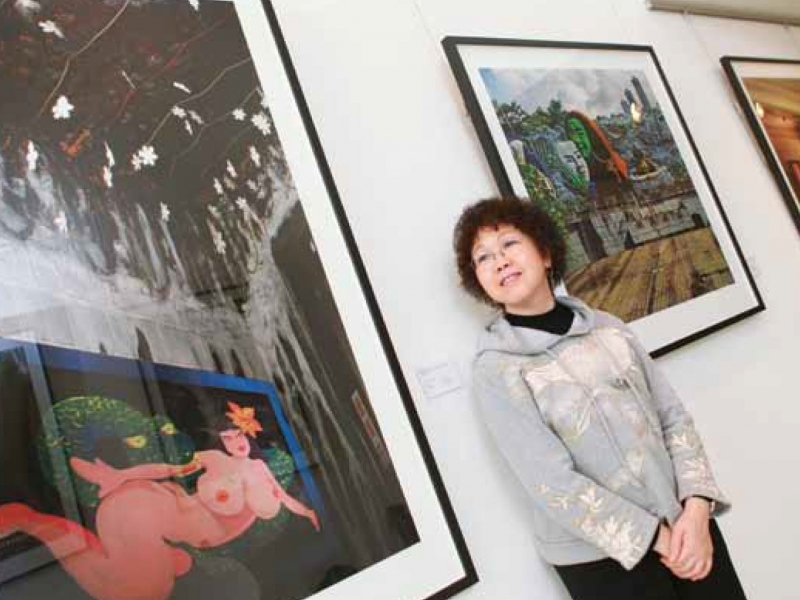Wobik Wong

Photography courtesy of Ken Kwok, Hong Kong Economic Journal
Hong Kong is filled with sleek skyscrapers, but longtime photographer Wobik Wong, TYL ’79, is interested in its much humbler architecture.
For more than 20 years, she traveled her homeland’s countryside, capturing images of dilapidated buildings and crumbling structures that were once popular local attractions, such as the Lai Yuen Amusement Park and the Eu family mansion. Wong says that such buildings, which served as the backdrop for her youth, have since decayed or have been demolished. Through her photography, Wong is determined to keep them intact.
Images from that collection were the focus of her latest exhibition, Memory and Fiction, held at BlindSpot Gallery—the only gallery in Hong Kong dedicated to photography. The exhibit included 14 of her original works.
“I paid particular attention to landmarks or buildings that carried historical significance or were frequented by locals once,” Wong says. “Because their demolition was inevitable, the only thing I could do was document them photographically. It was of paramount importance to me.”
For Wong, photography is about conveying her emotions and her personal understanding of the world. As a student, she was drawn to avant-garde French films that spurred visceral reactions.
“I was all about experimenting with new modes of art at that time,” she says. “I was always looking for something new.”
It was her hunger for the avant-garde that led Wong to Temple. While taking undergraduate courses in sculpture and printmaking at Columbus College of Art and Design in Ohio, Wong attended a seminar by former Temple Professor of Photography William Larson. She was so impressed with his work, she promptly applied to the Tyler School of Art.
“When I met [Larson], his series ‘Figure in Motion’ was attempting to relate time and space,” Wong recalls. “This was before Photoshop—at that time, manipulating images between time and space wasn’t easy. He was using cutting-edge techniques to do it.”
Wong says that in Hong Kong, photography is not accepted as a fine art form in the same vein as painting or sculpture, but it is gaining attention in the city’s art circles. She aims to boost that momentum: She is one of the founders of the Hong Kong Photo Festival, and, as one of the few women photographers who is a Hong Kong native, she also works to train a new generation of photographers as a teacher and an art administrator.
To read more alumni profiles, check out the latest issue of Temple.